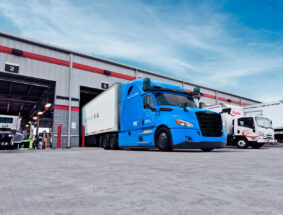Should You Lease or Take a Loan for New Vehicles? Here’s the Real Difference
Leasing Or Loan: Which Is More Profitable For Expanding Your Vehicle Fleet?
Transport companies, delivery services, and even businesses with modest logistics needs eventually face a decision: how to expand the vehicle fleet. Buying more trucks or vans is a sign of growth, but it also requires capital. Few companies can pay outright, so the choice often narrows to two options—leasing or loans. Both let you put more wheels on the road, but the financial outcomes differ. Understanding how each option works, where it fits best, and what risks it carries helps managers make a decision that supports long-term growth rather than just short-term convenience.
How Leasing Works
Leasing is essentially a long-term rental agreement. The business pays monthly fees to use the vehicle, but ownership stays with the leasing company. At the end of the lease, the vehicle is either returned, purchased at residual value, or exchanged for a newer model. Leasing appeals to firms that prioritize flexibility and want to avoid tying up capital in depreciating assets. Payments are predictable, often lower than loan installments, and maintenance packages are sometimes included. But since you don’t own the vehicle unless you buy it later, leasing builds no equity during the contract period.
Leasing Advantages
Lower upfront costs and predictable expenses make leasing attractive, especially for companies that update fleets regularly. It also keeps balance sheets lighter, as leased vehicles don’t appear as owned assets in the same way loans do.
How Loans Work
Loans, on the other hand, provide funds to purchase vehicles outright. The business takes ownership immediately and repays the borrowed amount with interest over a fixed term. Unlike leasing, loans build equity: the vehicle becomes a company asset, usable as collateral in future financing. Loans typically require higher down payments and carry larger monthly installments, but once the loan is repaid, the vehicle is fully owned. For firms that plan to keep vehicles long-term, loans may turn out cheaper in total cost compared to endless lease renewals.
Loan Advantages
Ownership is the main benefit. Even as vehicles depreciate, they retain some resale value. Companies with stable, predictable transport needs often prefer loans to leasing because assets remain on the books after repayment.

Comparing Leasing And Loans
The choice between leasing and loans depends on financial priorities, operational strategy, and risk appetite. Leasing favors flexibility, lower monthly costs, and frequent fleet renewal. Loans suit firms aiming for ownership, long-term use, and asset building. To weigh both clearly, it helps to compare their features side by side.
| Aspect | Leasing | Loan |
|---|---|---|
| Ownership | Leasing company owns vehicle; option to buy later | Immediate ownership after purchase |
| Upfront Costs | Usually minimal; first installment only | Down payment often required |
| Monthly Payments | Lower, fixed, sometimes includes maintenance | Higher, includes principal and interest |
| Flexibility | Option to upgrade at lease end | Asset retained until sold |
| Total Cost Over Time | May be higher if renewing leases repeatedly | Often cheaper long-term with ownership |
| Balance Sheet Effect | Less impact; vehicles not owned assets | Assets appear on balance sheet; builds equity |
The Trade-Off
Leasing offers short-term efficiency, while loans focus on long-term value. The profitability depends on how long the business intends to keep vehicles and how fast the fleet needs renewal.
Operational Considerations
Fleet decisions aren’t purely financial. Operations shape which option makes sense. Delivery companies handling perishable goods may prioritize reliability and prefer leasing newer models with service included. A construction firm might favor loans, keeping vehicles for decades even after loans are repaid. Operational cycles, maintenance capacity, and the importance of technology upgrades all influence the choice. In markets where fuel efficiency and emissions standards change quickly, leasing often provides more flexibility to stay compliant without heavy reinvestment.
Maintenance Factor
Leased vehicles often include service contracts, reducing administrative burden. Owned vehicles require internal maintenance planning but offer more control over schedules and costs.
Financial Risk Profiles
Lenders and leasing companies assess risk differently. Leasing companies consider residual values and usage conditions. Banks focus on credit ratings, collateral, and repayment capacity. For businesses with weaker credit profiles, leasing may be easier to obtain, since the asset itself stays with the leasing company. Stronger firms may find loans cheaper because they qualify for favorable interest rates. Understanding how risk is evaluated helps businesses negotiate better terms.
| Risk Area | Leasing Perspective | Lending Perspective |
|---|---|---|
| Asset Control | Vehicle remains property of lessor | Vehicle is collateral for loan |
| Default Risk | Reclaiming leased vehicle is straightforward | Repossession possible, but resale value uncertain |
| Credit Requirements | Often less strict, focus on usage terms | Higher credit standards, based on repayment history |
| Flexibility At End | Option to return, renew, or buy | Full ownership or resale value remains |
Balancing Risk
Leasing lowers upfront risk but keeps long-term costs ongoing. Loans require stronger credit but give the company more strategic control once assets are owned.

Examples From Practice
A courier service expanding rapidly may choose leasing to scale quickly, avoiding large upfront costs. Leasing allows them to adjust fleet size easily as demand shifts. A logistics firm with steady contracts and predictable demand may prefer loans, knowing vehicles will remain in service for years and provide residual value later. Both approaches work—but only if matched to business needs and financial discipline.
Industry Trends
In many markets, leasing is growing due to demand for flexibility and sustainability, with electric vehicles often provided through lease programs. Yet traditional loans remain strong in heavy transport sectors where vehicles are used until the end of their lifespan.
Strategic Decision-Making
The leasing vs. loan debate is not one-size-fits-all. Businesses must assess their expansion strategy, operational needs, and financial strength. Companies expecting fast growth may prioritize leasing to adapt quickly. Firms valuing asset building may lean toward loans. The smartest approach sometimes mixes both: leasing part of the fleet for flexibility while financing long-term workhorses through loans. This hybrid model balances liquidity with ownership benefits, reducing risk and keeping options open.
Planning Ahead
Whichever route is chosen, detailed financial planning is vital. Calculate not only monthly costs but total lifecycle expenses, resale values, and operational efficiency gains.
The Conclusion
Expanding a vehicle fleet through leasing or loans depends on priorities. Leasing offers flexibility, lower entry costs, and predictable payments but builds no ownership. Loans demand stronger finances but deliver long-term value and control. Both paths can be profitable if aligned with company goals and risk tolerance. For growing businesses, the key is not just asking “which is cheaper?” but “which matches our strategy?” A fleet is more than vehicles—it is the backbone of service. Financing it wisely ensures growth doesn’t just put more trucks on the road but strengthens the business behind them.


